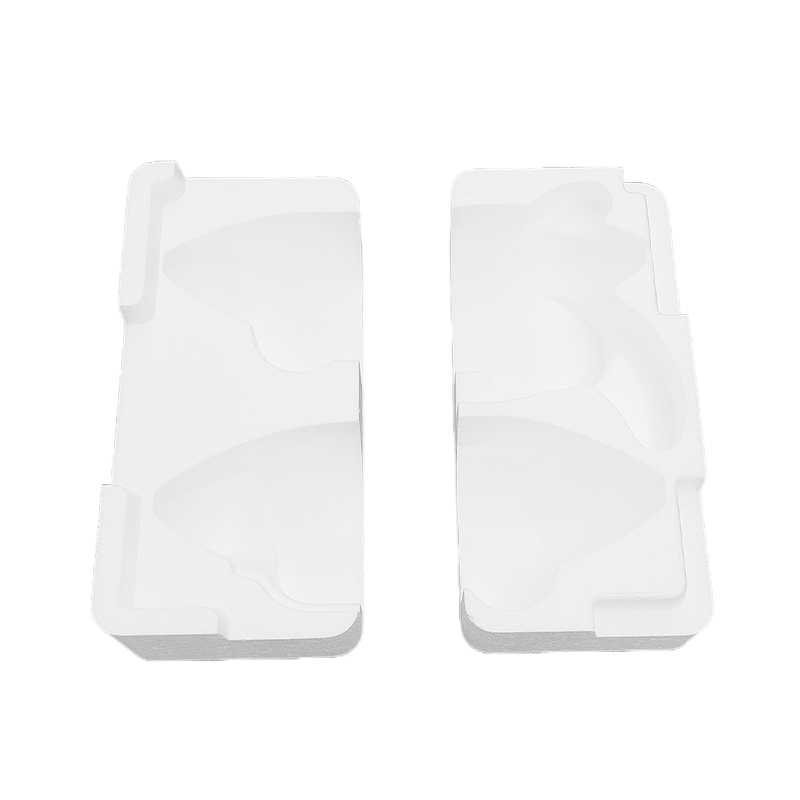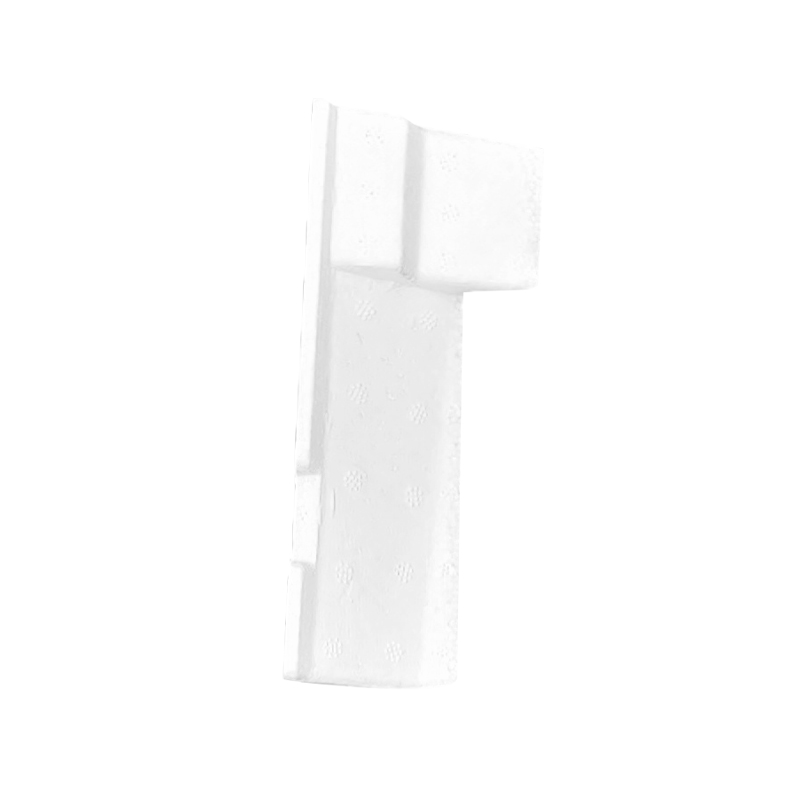How does EPS filler fit irregularly shaped appliances?
Release Time : 2025-10-30
EPS filler plays a crucial role in the protection of modern household appliances during transportation. Its core advantages lie not only in its lightweight and cushioning properties but also in its precise adaptability to the shapes of irregularly shaped appliances. Household appliances such as televisions, refrigerators, washing machines, or air conditioner indoor units often have complex geometric contours—curved screens, protruding control panels, external compressor piping, or irregular base structures. Traditional general-purpose packaging struggles to achieve a complete fit, easily creating gaps during transportation, leading to equipment shaking and collision damage. Customized EPS fillers, through precise design and molding processes, achieve a high degree of fit to the appliance's shape, creating a unique "protective mold."
This fitting ability stems from its highly malleable material properties and advanced manufacturing technology. EPS, or expanded polystyrene, is composed of countless tiny closed-cell air bubbles. Before molding, it is a loose granule that can be fused and expanded within a precision mold through steam heating, perfectly replicating every detail of the mold's interior. Manufacturers design perfectly matching female molds based on 3D models or physical scans of appliances, ensuring that every recess, protrusion, and curved surface of the EPS filler fits seamlessly with its corresponding part of the appliance. Whether it's the interface area on the back of a TV, the handle recess on a refrigerator door, or the ventilation grille on the side of a washing machine, EPS can precisely cover it, forming a gapless contact surface.
In terms of structural design, the filler uses a layered or multi-part combination approach, each corresponding to a different functional area of the appliance. The front filler is specifically designed to protect the glass screen, with a smooth, flat surface and thickened edges to absorb frontal impacts; the side and bottom structures wrap around the compressor, circuit boards, or brackets, using bosses and slots to secure protruding components and prevent them from moving around inside the enclosure. For devices with external piping or antennas, the filler has dedicated channels or grooves to suspend and fix these vulnerable components, preventing damage from pressure. This zoned protection strategy ensures that each vulnerable point receives targeted protection.
Fitting is not just about replicating the shape; it also includes detailed functional processing. The surfaces of the filler that come into contact with the appliance are typically finely polished to remove burrs and sharp edges, preventing scratches to the paint or casing. Critical stress areas are appropriately thickened to enhance localized pressure resistance, while other areas remain lightweight, balancing protection and cost. Some designs also incorporate guide structures, allowing the appliance to slide naturally into its designated position during packing, reducing the risk of collisions caused by manual adjustments.
Furthermore, the elasticity and resilience of EPS filler further enhance the dynamic performance of the fit. During transportation, equipment may experience slight displacement due to bumps; the porous structure of EPS quickly rebounds after being compressed, continuously applying uniform support and keeping the appliance stable in the center position. This "dynamic fit" avoids stress concentration caused by minor misalignments in rigid packaging, effectively dispersing impact energy and preventing localized damage.
Ultimately, the fit of EPS filler to irregularly shaped appliances represents a perfect combination of materials science, industrial design, and manufacturing precision. It is no longer a simple filling material, but a "protective exoskeleton" tailored to each appliance, firmly protecting every corner and component of the device during the bumps of transportation, ensuring that users receive not only a fully functional appliance, but also a quality promise that is as good as new.
This fitting ability stems from its highly malleable material properties and advanced manufacturing technology. EPS, or expanded polystyrene, is composed of countless tiny closed-cell air bubbles. Before molding, it is a loose granule that can be fused and expanded within a precision mold through steam heating, perfectly replicating every detail of the mold's interior. Manufacturers design perfectly matching female molds based on 3D models or physical scans of appliances, ensuring that every recess, protrusion, and curved surface of the EPS filler fits seamlessly with its corresponding part of the appliance. Whether it's the interface area on the back of a TV, the handle recess on a refrigerator door, or the ventilation grille on the side of a washing machine, EPS can precisely cover it, forming a gapless contact surface.
In terms of structural design, the filler uses a layered or multi-part combination approach, each corresponding to a different functional area of the appliance. The front filler is specifically designed to protect the glass screen, with a smooth, flat surface and thickened edges to absorb frontal impacts; the side and bottom structures wrap around the compressor, circuit boards, or brackets, using bosses and slots to secure protruding components and prevent them from moving around inside the enclosure. For devices with external piping or antennas, the filler has dedicated channels or grooves to suspend and fix these vulnerable components, preventing damage from pressure. This zoned protection strategy ensures that each vulnerable point receives targeted protection.
Fitting is not just about replicating the shape; it also includes detailed functional processing. The surfaces of the filler that come into contact with the appliance are typically finely polished to remove burrs and sharp edges, preventing scratches to the paint or casing. Critical stress areas are appropriately thickened to enhance localized pressure resistance, while other areas remain lightweight, balancing protection and cost. Some designs also incorporate guide structures, allowing the appliance to slide naturally into its designated position during packing, reducing the risk of collisions caused by manual adjustments.
Furthermore, the elasticity and resilience of EPS filler further enhance the dynamic performance of the fit. During transportation, equipment may experience slight displacement due to bumps; the porous structure of EPS quickly rebounds after being compressed, continuously applying uniform support and keeping the appliance stable in the center position. This "dynamic fit" avoids stress concentration caused by minor misalignments in rigid packaging, effectively dispersing impact energy and preventing localized damage.
Ultimately, the fit of EPS filler to irregularly shaped appliances represents a perfect combination of materials science, industrial design, and manufacturing precision. It is no longer a simple filling material, but a "protective exoskeleton" tailored to each appliance, firmly protecting every corner and component of the device during the bumps of transportation, ensuring that users receive not only a fully functional appliance, but also a quality promise that is as good as new.







